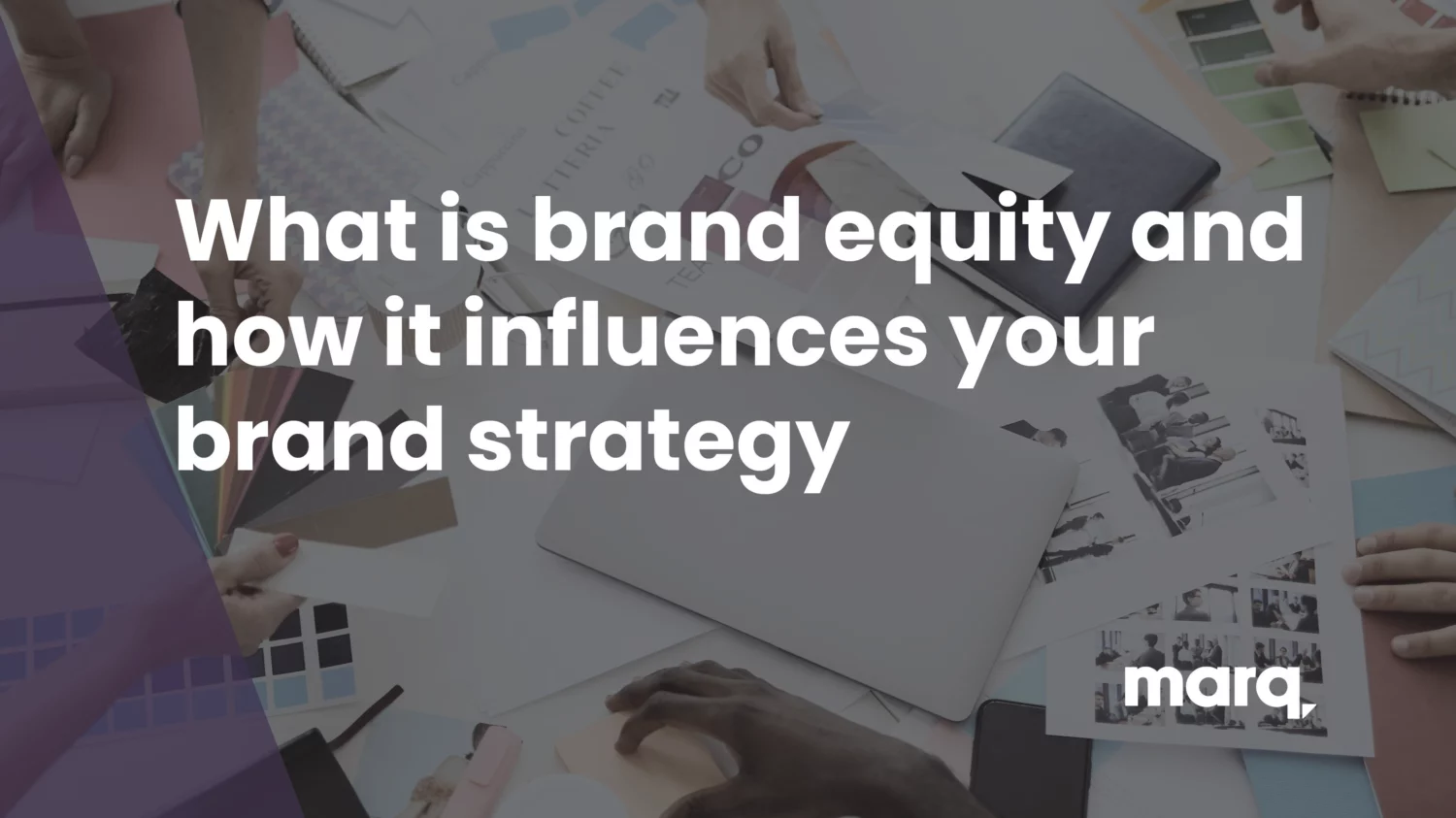The topic of brand equity has never been more relevant to us ,given that in July 2022, we took the risk of all risks and rebranded. While we had a loyal customer base going into the rebrand, it presented us with an opportunity to communicate who we are and what we do in a different way; a more meaningful way. Brand equity is about trust. It is about what you say and how you say it. Your brand’s reputation matters and the value of your brand will dictate the levers you can pull as you grow your audience and your business.
So, we ask the question, how much is your brand worth?
In this article, we’ll dive into the heavy topic of brand equity and promise to throw in a few anecdotes along the way to keep it upbeat.
You will learn
- What is brand equity?
- Why does brand equity matter?
- What influences brand perception?
- How does your brand equity influence content strategy?
Let’s get to it.
What is brand equity?
Your brand’s reputation means something. The question you should ask when you think about your brand’s value is how well does your brand generate loyalty and meet customer preference? At the heart of brand equity is your brand’s value, from the products you offer to the name itself. We can measure it through various levers, but to ensure we put our best brand foot forward, we need to understand what contributes to our brand’s overall value.
Brand equity comprises three key components.
- Brand awareness
- Brand recognition
- Brand perception
You’ve likely heard of each of these and consider them in your brand and content strategies. Even still, there is value in going back to the basics and ensuring that your strategy promotes brand equity in every aspect.
Brand Awareness
To put it simply, do people know who you are? As a brand, your ongoing objective as you carve out your space in the market is to get your brand out there and do it often. To gain traction, build your audience, and expand your customer base, your brand has to be known, which according to the stats, takes a repeated effort. The marketing rule of “7” means exposure to your brand has to occur at least seven times for it to stick.
This means that your content strategy and overall brand efforts require consistency if you want to build a brand.
A slice of the brand awareness formula is education about who you are and what you do, which contributes to the other components of brand equity. That said, it takes time to build your audience and establish rapport, but it all starts with consistent exposure.
Brand Recognition
A key component of brand equity is brand recognition. We talked about brand awareness and how crucial consistency is for your audience to recall who you are, but you want to build upon that. Brand recognition is the part where your audience is not just aware of your brand, but they know who you are and identify your brand. Brand recognition is the degree of familiarity the general public, but more importantly, your target audience has about your brand.
A powerful brand is known and recognized. Your brand recognition is created through your brand identity, voice, marketing, product, and of course, the value of the product or service you provide.
If you feel like you’ve been at this for a while and you are still struggling to gain recognition, it’s possible that you need to evaluate your brand marketing strategy. The ideal state, with enough exposure, your audience will begin to recognize your logo and know what you do.
Brand Perception
Now, brand perception may be the most important component of brand equity because once your audience becomes aware of your brand and recognizes it, what do they think about you?
Brand perception is influenced by all of the aspects of your brand that you would think.
- Brand Image
- Product quality
- Brand experience (inclusive of customer experience)
How do people feel when they think about your brand? This question leads us directly into a larger discussion around why brand equity is important.
Why does brand equity matter?
We all understand the brand is important. We hopefully also recognize that brand is how our audience can know who we are and connect with us. Sometimes, it is easy to overlook the foundational elements that lead to growth. We can’t grow our audience without consistently putting our brand in front of new prospects. We can’t convert new customers if there is no belief that our brand can deliver on our promise. Brand awareness, brand recognition, and perception may seem like basic elements established organizations should understand, and more likely than not, they are missed as a result of moving too quickly or operating with a lack of overall strategy.
Benefits of building brand equity
When you’ve built trust and loyalty with your audience and customers, your brand benefits in many ways. We all want brand equity, and as we just covered, some of the basic factors that build it are frequently overlooked. If brand equity is prioritized in your strategy, what are the benefits?
Loyal customer base
This means predictability in your revenue stream, which also gives you the ability to build upon your product, make changes, and even consider adjustments in pricing because you know your customers believe in your brand. Obviously, there is a fine line on what you can do, but when you have customers fully supporting your brand, you can operate with more confidence. Brand equity means trust, and trust gives you more flexibility.
Easier growth trajectory
When you can rely on customers returning to your brand, you can also leverage your customer’s experience with your brand to grow your business. As brand equity builds and your audience becomes more familiar with your brand, that is another growth lever. Customer testimonials have more value, and it becomes less difficult to educate new customers when you have demonstrated a pattern of success.
Consider Amazon. Love them or hate them, the online book store expanded into other categories ,and sometimes, it feels like a different life when we think about them as just an online book store. They leveraged customer experience and brand equity to grow into other categories, and it paid off.
Clear differentiation
Brand equity is greatly beneficial when your brand is stacked against your competitors. When you’ve established a solid reputation ,and the perception of value is high, you can stand out. When your audience can see what they get from your brand compared to the other options available, that is a big win and says a lot about your brand’s equity.
How does your brand equity influence content strategy?
The title for this article could have been “back to brand basics” because these key components that build your brand are so easily forgotten or given the backseat when creating your brand and content strategies. With this in mind, let’s think about how brand equity influences your content strategy.
Ways brand equity influences content strategy.
- Brand consistency is more important than ever before.
Brand awareness leads to brand recognition which influences brand perception, and all of these components happen when you are consistent with your branded content. When faced with speed and demand, it can be easy to overlook consistency, but if your audience sees variations of your brand in the wild, it will be harder for them to connect the dots. Leverage brand templates to ensure no matter who is creating content, it represents your brand. Make brand consistency a priority, and your brand equity will directly benefit.
2. The story you tell should resonate.
How your audience perceives your brand and how they relate to the problems you solve is directly linked to brand equity. Take the time to think through your brand messaging and make a point to ensure that your brand story is clearly communicated in your content strategy. Your brand suffers if your content is missing the mar(q).
3. Consistent communication. Stay in touch.
Back to the rule of seven, which can be argued given the amount of content, we are flooded with daily, but in either case, you should be consistently producing content to connect with your audience. This consistent communication creates more opportunities to build your brand. It is how you establish recognition and how you build brand loyalty. Consistently communicate with your audience, and your brand will benefit.
4. Share positive brand experiences.
Perhaps the best part of building a brand is hearing your customers’ wins. It is an immediate brand boost when they find success in your products and services. Your content strategy should include sharing positive brand experiences with your audience. This gives your brand credibility and contributes to that brand image you’ve been working so hard to build.
To learn more about how Marq can help you achieve brand consistency and produce content at scale, you can schedule a 1:1 with our team.



